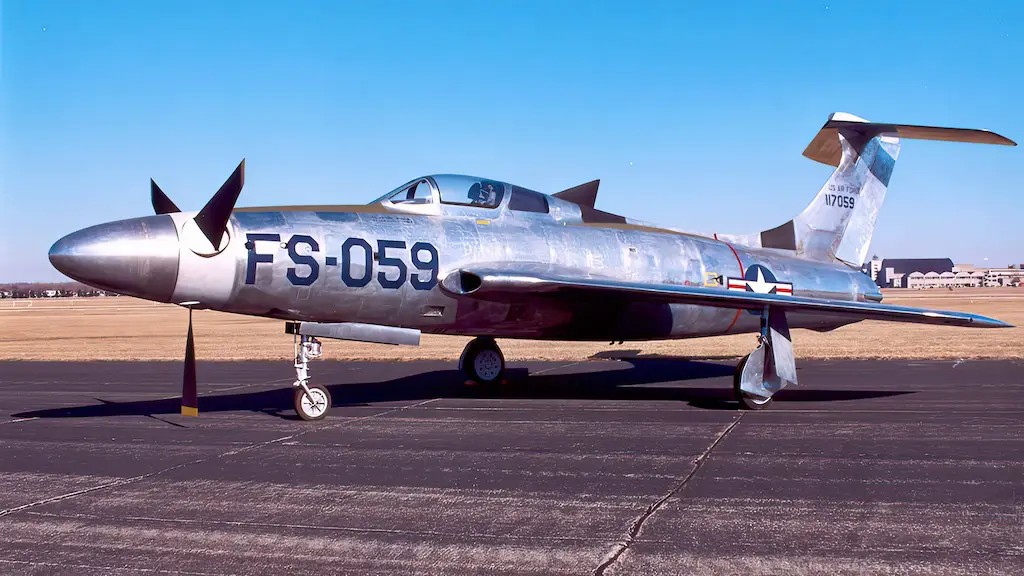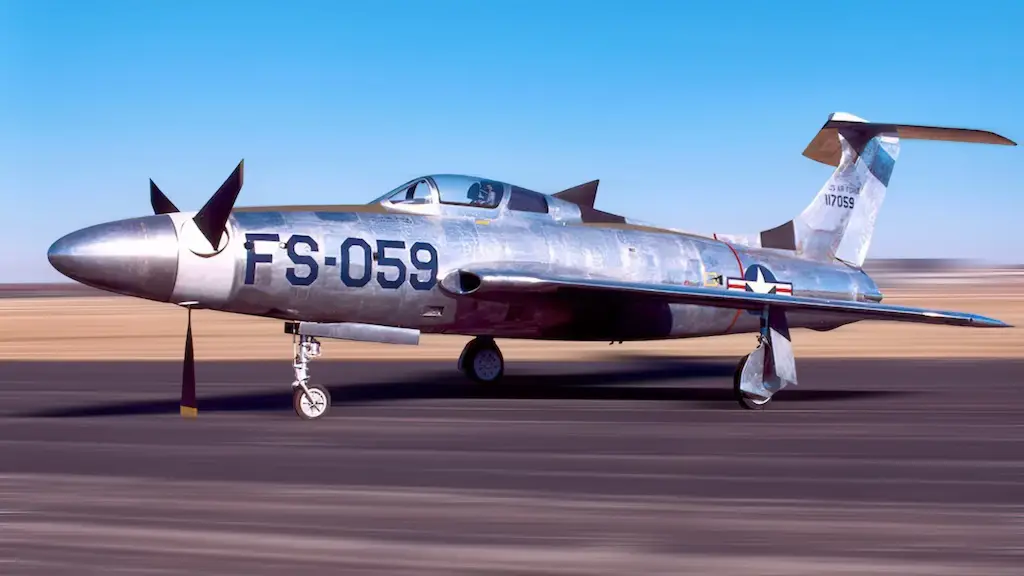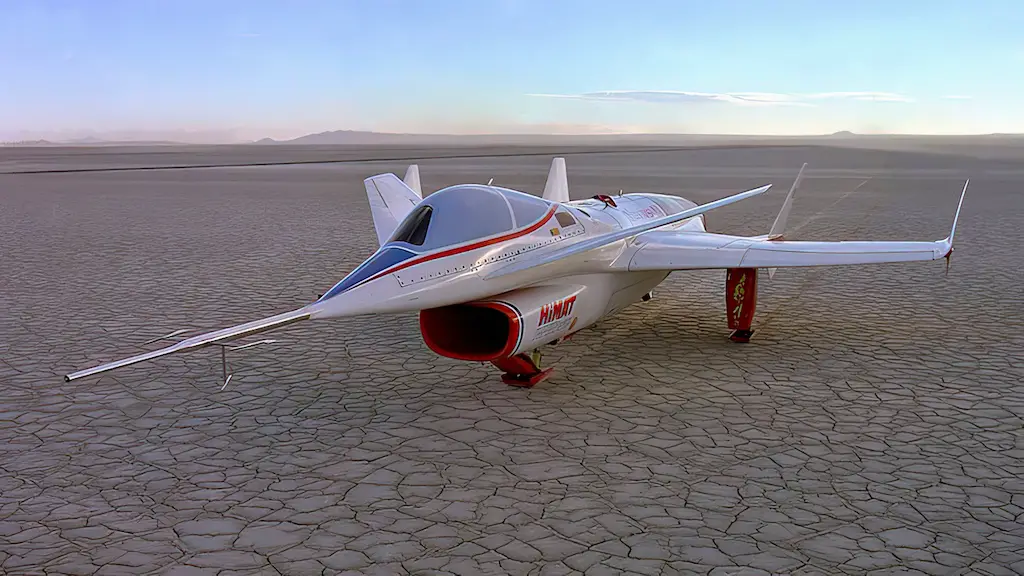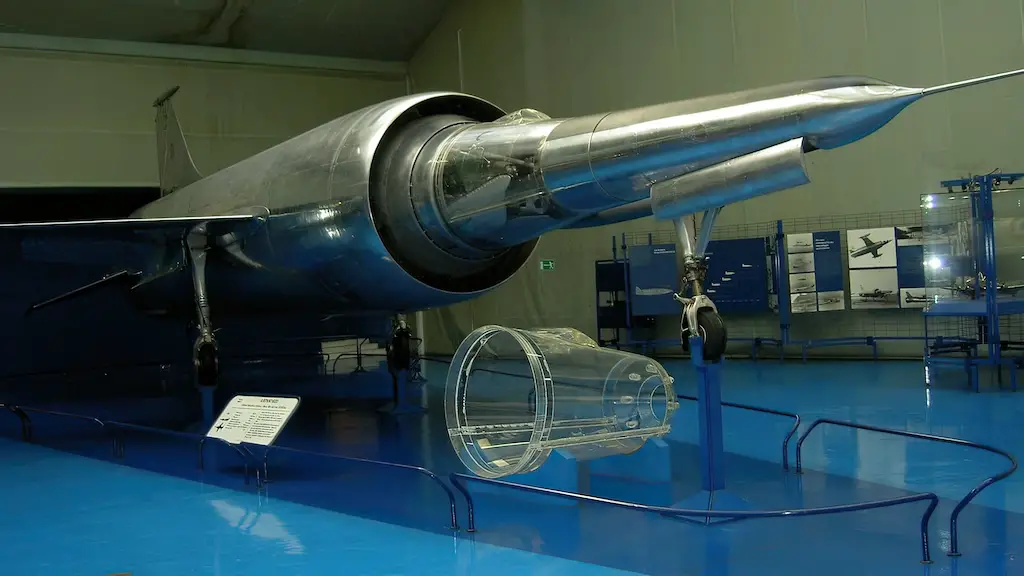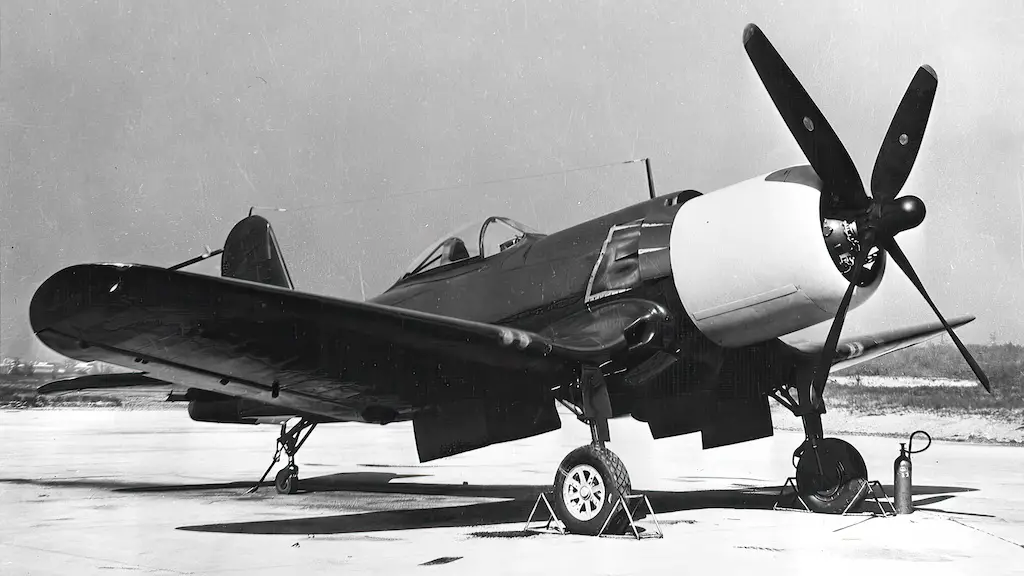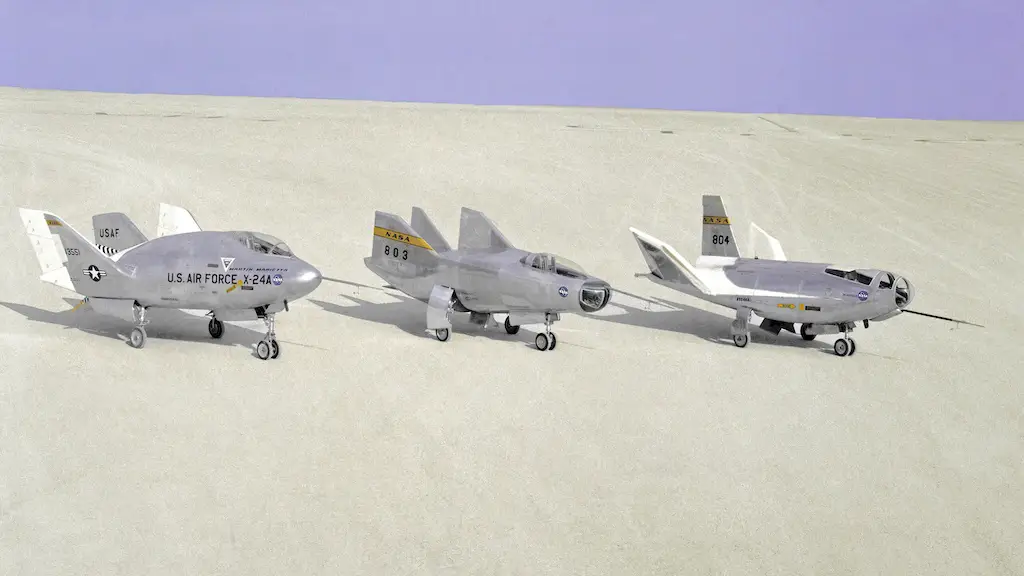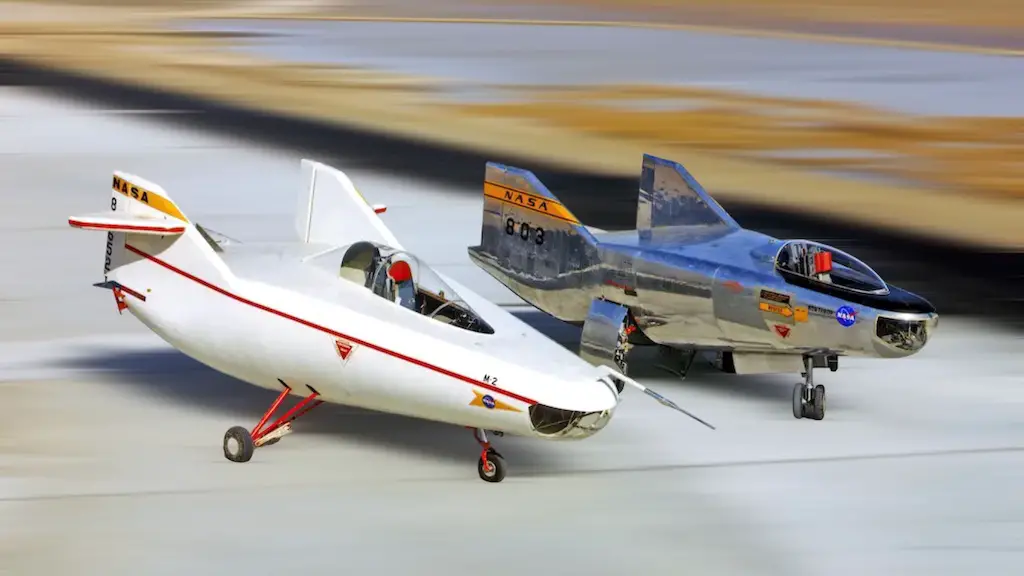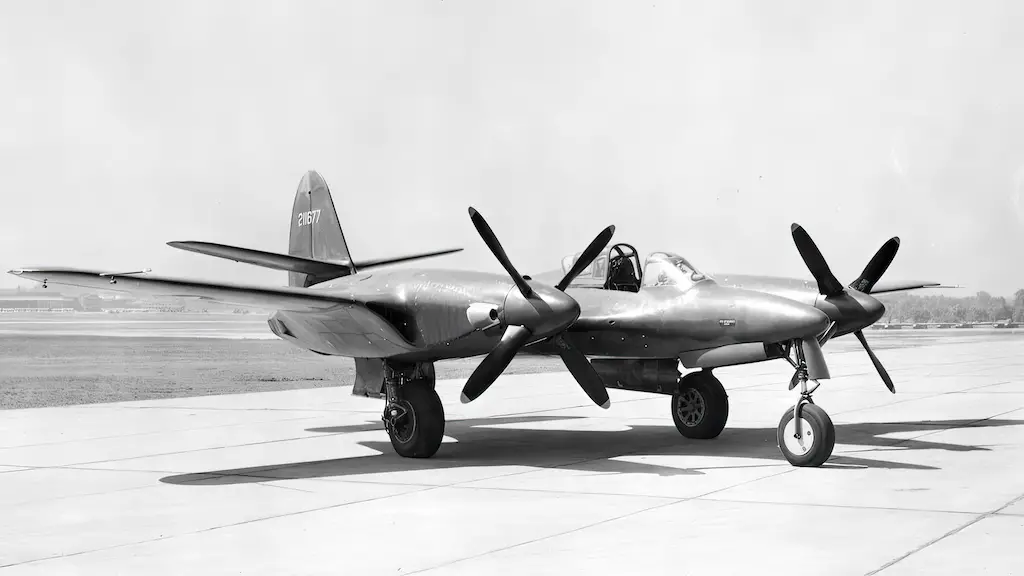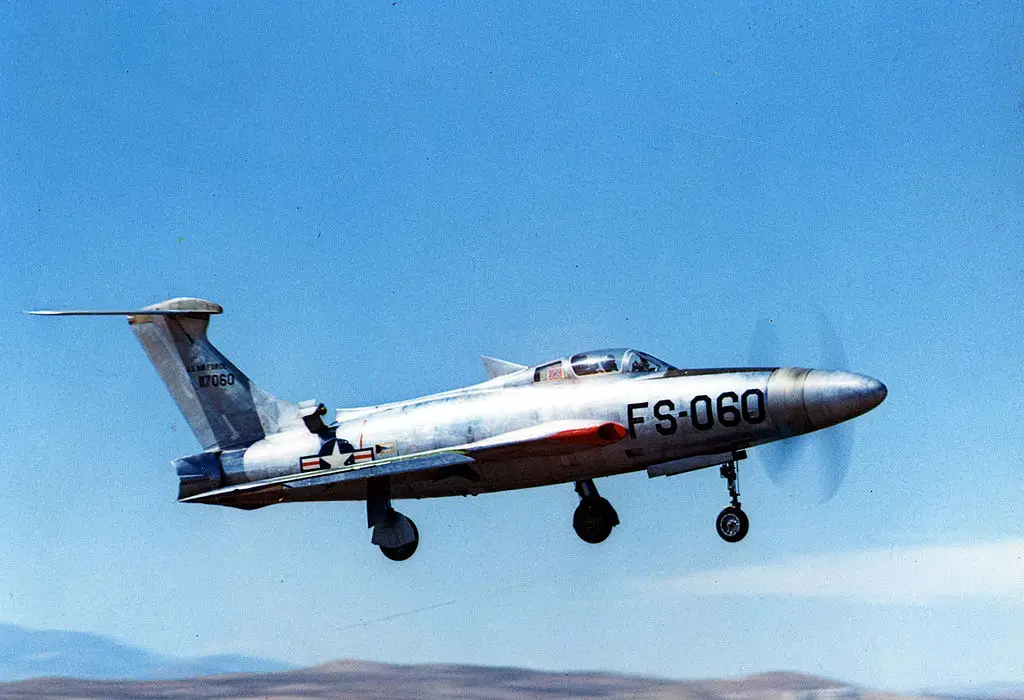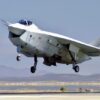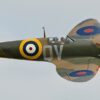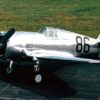A deceiving name
Aircraft names are usually bad***; they evoke a sense of power and strength and are often inspired by nature or animals. However, sometimes these names are earned through specific characteristics of an aircraft; this was the case for the XF-84H Thunderscreech.
As the name implies, the Thunderscreech had some serious noise issues. The aircraft’s supersonic propeller tips made it extremely loud. In fact the noise was so loud that it damaged neighboring structures and gave ground crew members headaches and nausea.
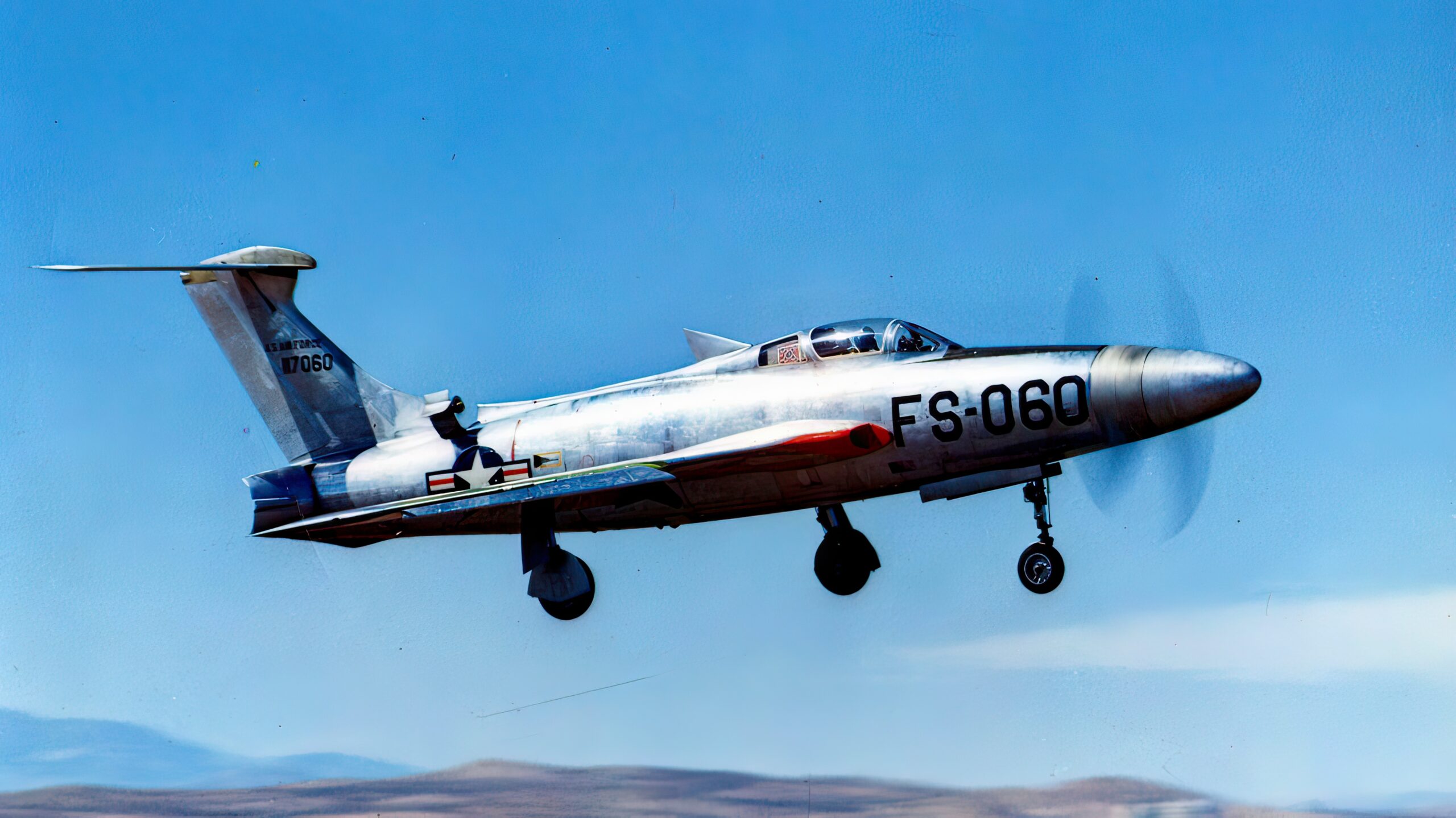
A terrible prototype
Designed by the Republic Aviation Company, the XF-84 was based on the F-84 Thunderjet. The upgrades could be boiled down to a new Allison turboprop engine and a supersonic propeller design.
The Allison XT40-A-1 engine was a turbine that had a maximum output of over 5,000 horsepower, making it significantly more potent than conventional piston engines. It was meant for the supersonic propeller design to increase the aircraft’s speed by lowering drag and raising thrust.
On July 22, 1955, the XF-84H prototype made its first flight. Over the following few months, it completed several flight tests. However, numerous issues plagued the aircraft’s construction. The scimitar-shaped XF-84H’s propeller blades spun at supersonic speeds, producing a distinctive high-pitched whine that could be heard for miles. The noise was so loud that it could make the ground crew queasy, give them headaches, and could even physically harm adjacent structures.
The XF-84H also experienced frequent mechanical failures that were challenging to keep and engine stalls and vibrations that made it difficult to control. The XF-84H was prohibitively costly due to the turboprop engine’s high manufacturing and maintenance costs compared to conventional piston engines.
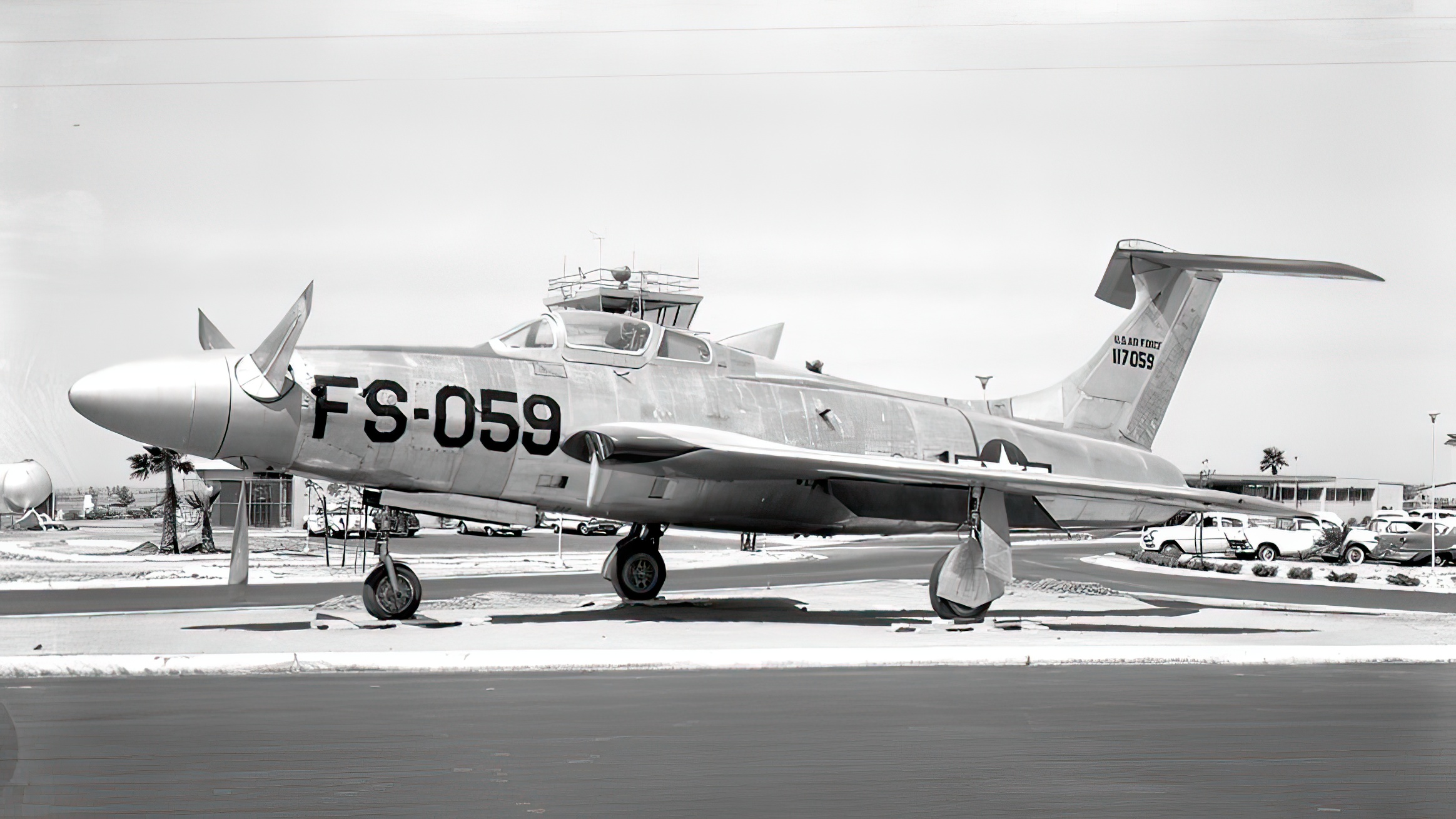
The propellers caused yet more issues
If the noise wasn’t bad enough, the pilot also had to be careful not to push the engine too much because the propeller blades would simply disintegrate at certain speeds. This happened on June 20, 1956, during a demonstration flight at the Californian Edwards Air Force Base.
Lieutenant Colonel Frank B. Everest, Jr., the XF-84H’s pilot, unintentionally opened the throttle too far during the flight, pushing the supersonic propeller past its design limits and causing it to shatter in midair. The aircraft’s engine and airframe sustained significant damage from the explosion. Lieutenant Colonel Everest made an emergency landing without being hurt despite the propeller’s catastrophic failure.
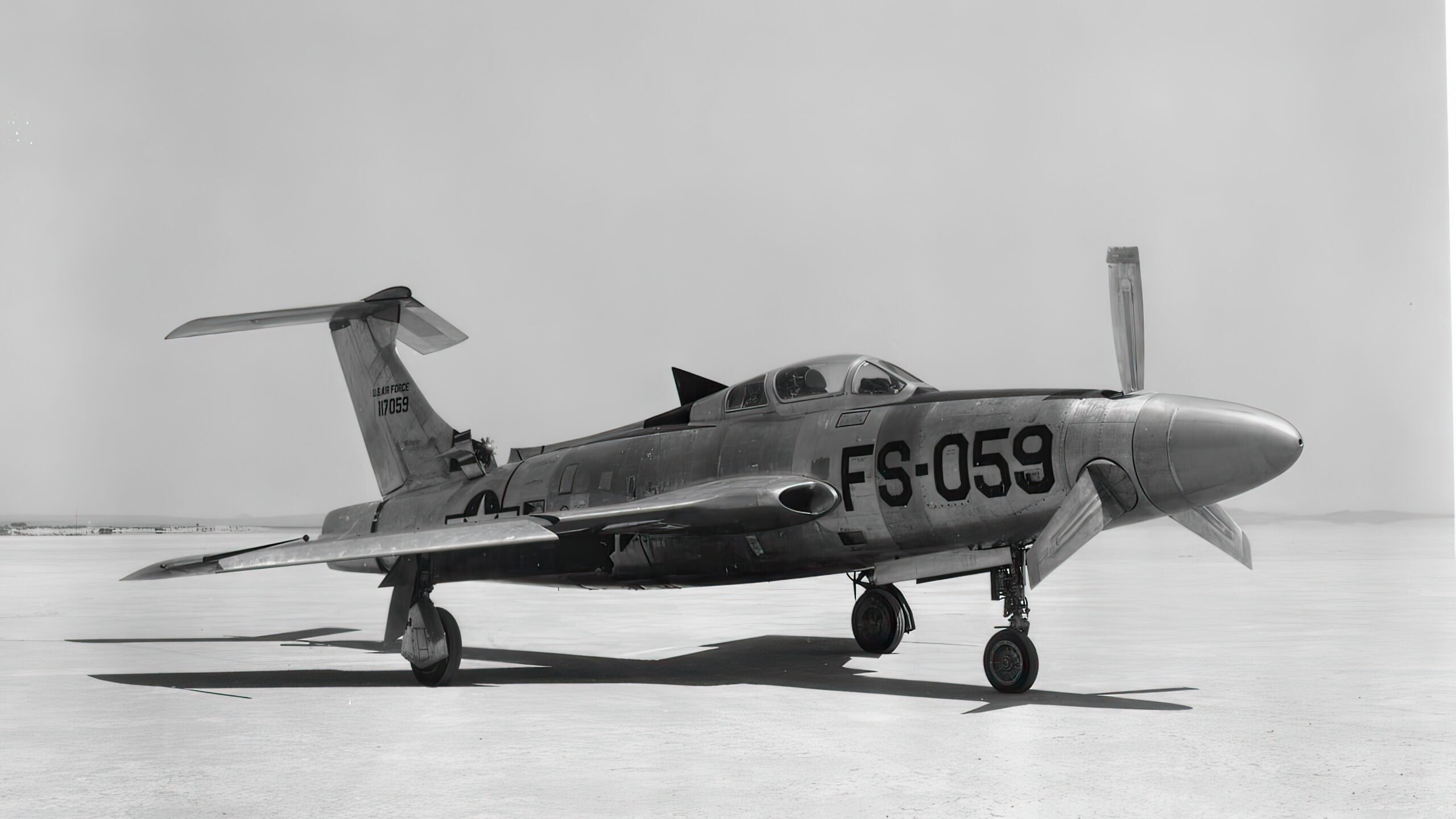
Even the legendary Chuck Yeager couldn’t tame it
In his book “The Quest for Mach One: A First-Person Account of Breaking the Sound Barrier.” Major Chuck Yeager gave a detailed account of an incident involving the XF-84H that occurred during flight testing at the Edwards Air Force Base in 1955.
The aircraft’s propeller made an extremely loud noise during a high-speed test flight that broke the windscreen and canopy, rendering test pilot Major Chuck Yeager unconscious. Yeager managed to recover consciousness and safely make an emergency landing, but the incident highlighted the risks associated with the XF-84H’s supersonic propeller design.
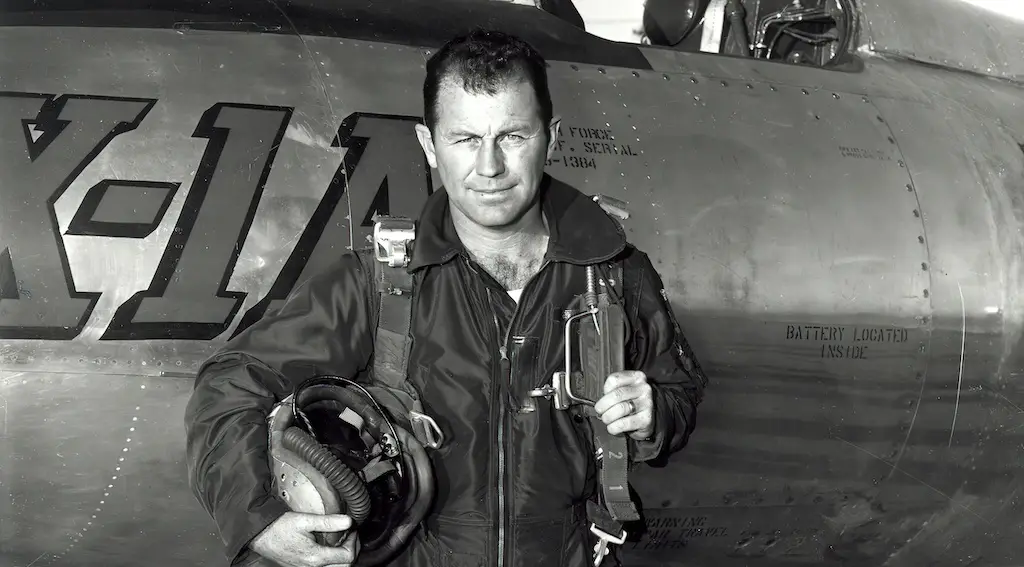
Enough din and racket!
The XF-84H program was cancelled in 1956, after only two prototypes had been built and flown. The engine was prone to stalling and difficult to control vibrations, and it frequently experienced mechanical failures that made it challenging to maintain. The XF-84H was also extremely expensive for the Air Force due to its innovative technologies, such as the supersonic propeller and turboprop engine, making it much more costly to manufacture and maintain than other aircraft.
Operational problems and these technical and financial concerns plagued the XF-84H. Even though the aircraft was made to operate from short runways, it was challenging to land and take off from these runways due to its size and weight. It was less suited to the requirements of the Air Force because it was challenging to maintain and service in an isolated or hostile environment.
While there’s nothing official regarding the noise issues, we’re assuming they were also having trouble finding an airbase which would tolerate the nauseating screeches of the XF-84H!
